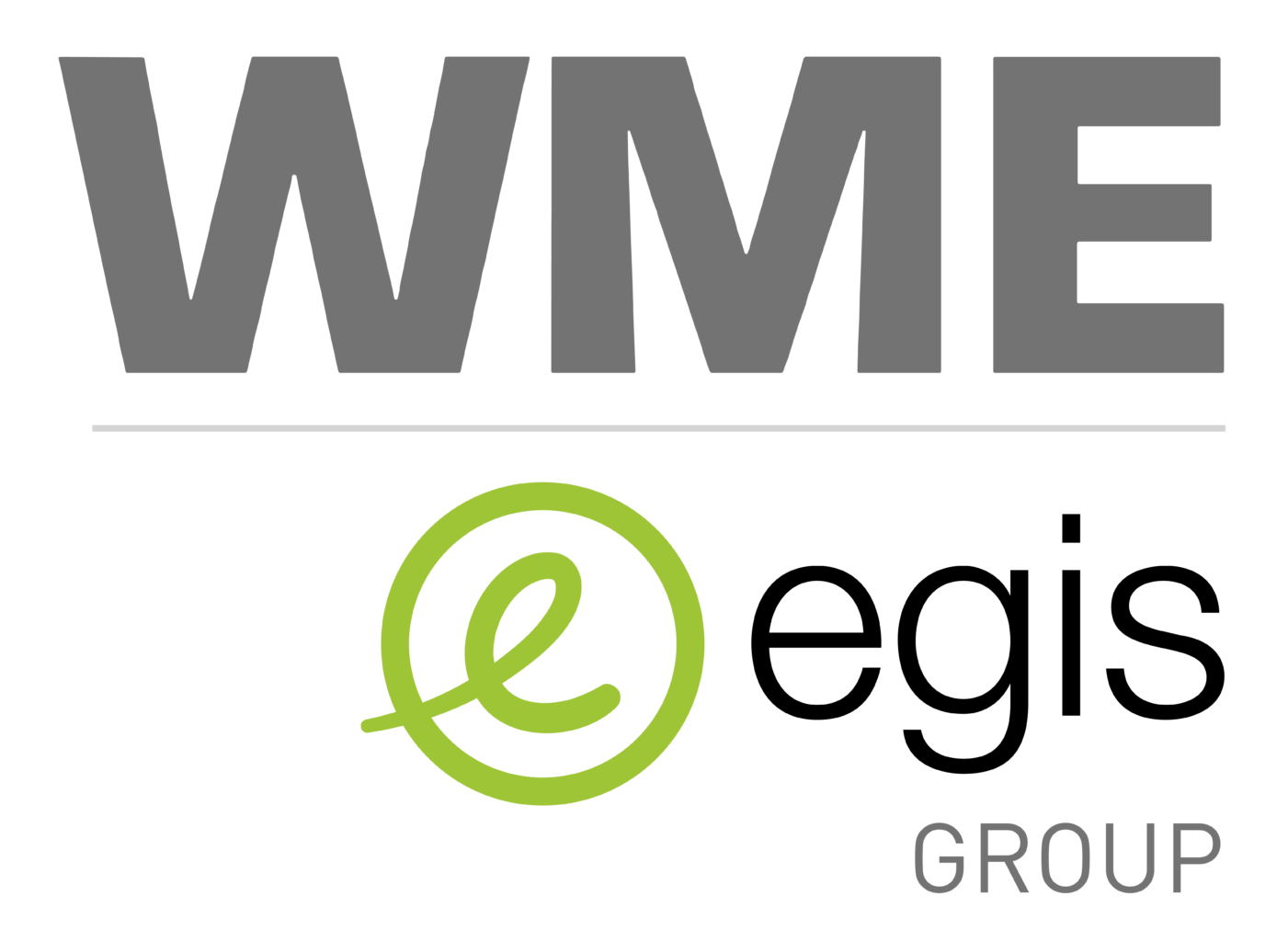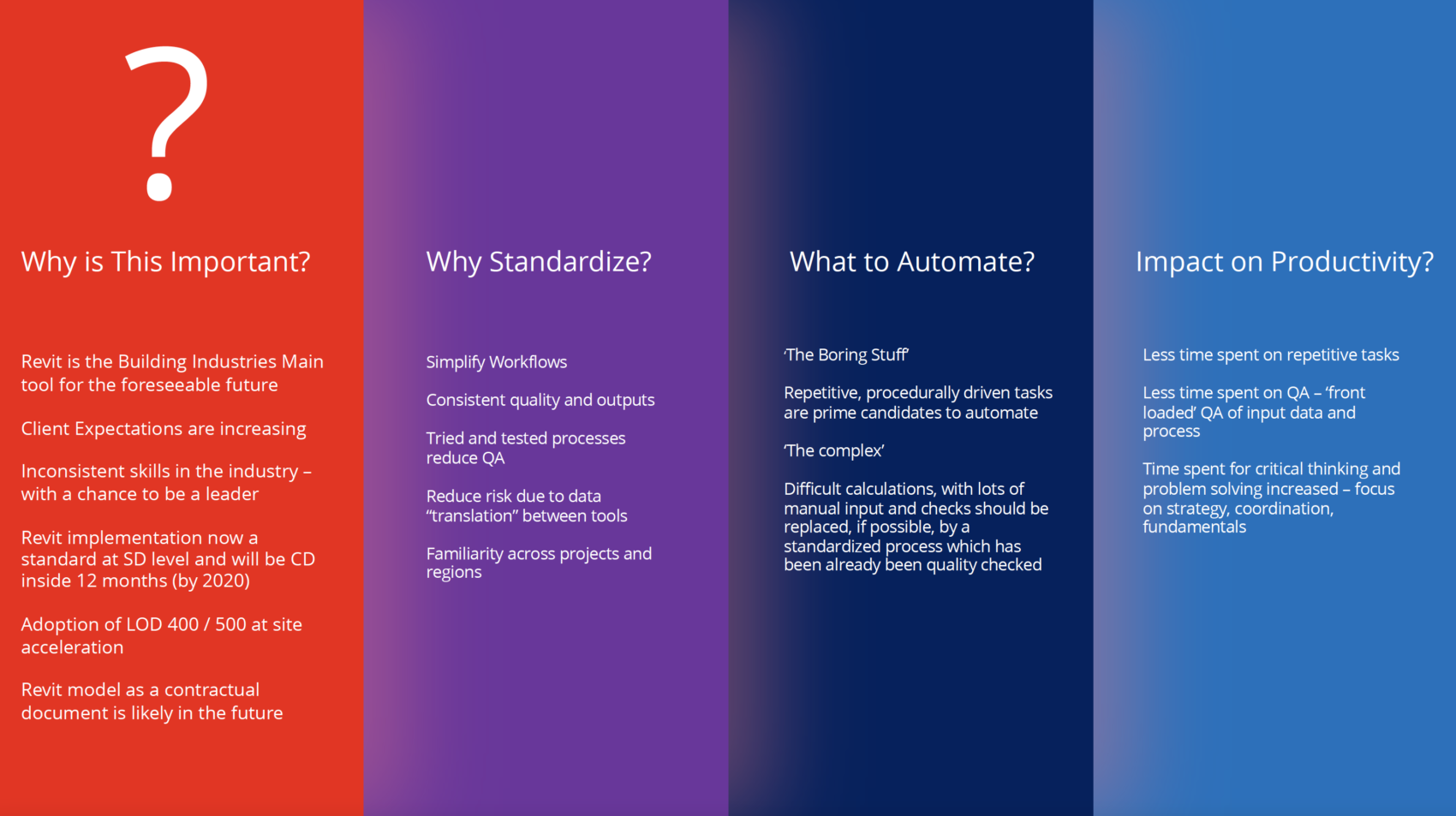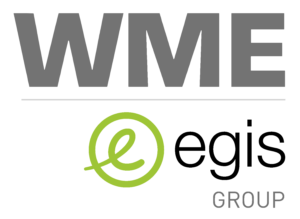
WME started their digitalisation journey in 2019 setting up a dedicated Digital Delivery Team drawn from all levels of the MEP team from MEP Director to Graduates; The goal of this team was to move beyond considering 3D drawing production and clash detection at the start and end of BIM and to embrace the latest software and methods to understand the capabilities of Revit “out of the box”.
Furthermore we also set out to investigate how 3rd party tools and self-developed scripts could be utilized to improve workflows resulting in faster production, better QA and improved efficiency.
In the last 18 months this team has grown to involve the full MEP team with many workflow technical guides prepared and in use and in 2021 WME is now striving for “End to End” digitalisation in the MEP workflows from concept to IFC.
Over the coming weeks WME will provide updates on the process and the outcomes.
So, the first question to address is why is this considered a cornerstone of WME MEPs future?

Part 2
After the initial commitment to begin to developing Digitalisation within the WME MEP team a research period and assessment of our existing internal capabilities was carried out and it revealed a number of possibilities either from existing strategies developed and presented during the Autodesk University Conferences or white papers circulated online to existing experience of team members with Dynamo or other scripting tools.
Once we had assessed our baseline of skills we decided to focus in on a single workflow or process to grow our collective understanding and delivery an initial win within the 4 weeks of the Digital Delivery Teams inception. After initial discussion and debate it was agreed to focus on using the space types and areas to link to an excel master data sheet to allow us to “push” data into revit so that in can then be used for calculations via the scheduling functions of Revit or simply to “store” the data and maintain it from the earliest stages of the project to completion.
Initially this was trialed with only 2 data elements; the cooling load density in w/m2 and the electrical power density in w/m2. After importing this data to revit we were then able to create colour coded drawings that reflected concept stage load densities, calculate floor-wise or building wise loads and apply diversities or other calculations as was felt necessary. With this first success the basic approach was developed to an all-encompassing MEP room data sheet that can be scaled from basic concept stage information such as whether the design in that space was “shell and core” or “fit-out” all the way through to Detailed Design room data such as the number of sockets in a room or the latent gains to be considered in the cooling loads.
This approach also has the huge advantage that it allows the team to very quickly react to changes in the model as it is no longer necessary to manually update calculations or data sheets based on architectural changes as this can be conducted within minutes via running the scripts in sequence and the reviewing the output drawings and schedules. This initial step in late 2019 really set the team in a positive direction and is now the first digitlisation activity conducted on all of WMEs projects. Over time it has grown and developed and is now the key starting point for other workflows developed both with dynamo and revit but also linking through to 3rd party applications such as IES and HAP.








